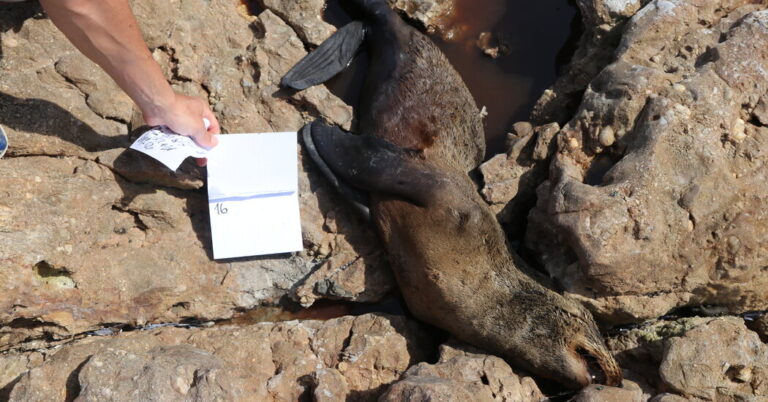For the last three years, scientists in South Africa have been trying to unravel a grim marine mystery: What was happening to the Cape fur seals?
The boisterous marine mammals, which are common along the nation’s shores, began washing up dead in enormous numbers. Pregnant females delivered dead premature pups. And some seals began displaying unusually aggressive behavior, attacking humans, dogs and each other.
Some scientists suspected that a neurotoxin produced by algae might be to blame. In recent weeks, however, another specter has come into focus: rabies.
So far, 17 seals have tested positive for the virus, said Tess Gridley, a founding director of Sea Search Research and Conservation, who has been investigating the seal deaths. The cases, which date back to at least August 2022 and span hundreds of miles of coastline, may be the first sustained rabies outbreak ever documented in marine mammals.
“What I’m doing here is sitting here and putting together all the reports of aggressive interactions between seals and dogs and seals and people in the past few years,” Dr. Gridley said. “And it’s telling quite a scary story.”
Rabies, which is nearly always fatal once symptoms occur, spreads through the saliva of infected animals. So far, no human cases have been reported, but, according to Dr. Gridley’s tally, at least 72 people in South Africa have been bitten or scratched by Cape fur seals since 2021; eight have been bitten by seals since confirmed to have rabies.
This week, scientists and officials gathered in Cape Town to discuss what they knew about the outbreak and how to move forward. They agreed to euthanize seals suspected of having rabies and to vaccinate those that come into frequent contact with people, Dr. Gridley said.
But much about the outbreak, and the best way to manage it, remains uncertain.
“It’s a really tricky situation,” said Gregg Oelofse, the coastal manager for the City of Cape Town. “There’s no global reference point for dealing with rabies in a marine mammal species.”
Rabies is rare in marine mammals, and when large numbers of seals began turning up dead in 2021, the disease was not high on the list of possible causes. Instead, Dr. Gridley suspected domoic acid, a toxic compound produced by certain kinds of algae. The toxin has been linked to sea lion deaths in California and is known to cause neurological symptoms. (The scientists did not see any signs of bird flu, which has killed large numbers of seals and sea lions in North and South America.)
But a spate of aggressive seal attacks this spring put rabies back on the radar, and Dr. Gridley and her colleagues decided to test four seals for the virus, even if a long shot. “Everyone had been telling us that rabies doesn’t exist in Cape fur seals and we were wasting our time,” Dr. Luca Mendes, a veterinarian at False Bay Veterinary Clinic, said.
But three of the seals tested positive. “It just opened up a whole new can of worms,” Dr. Mendes said.
The research team has stored brain samples from many of the seals that have died over the last few years; it is currently in the process of testing the samples for rabies. The virus probably does not explain all of the deaths, some of which could still be related to domoic acid, scientists said.
Viral samples from the infected seals suggest that the marine mammals were infected with a canine version of the virus, said Dr. Lesley van Helden, a state veterinarian at the Western Cape Department of Agriculture. In South Africa, this form of rabies is present not only in domestic dogs but also in wild bat-eared foxes and black-backed jackals.
“The viruses obtained from seals appear to be more closely related to our wildlife viruses than those currently circulating in dogs,” Dr. van Helden said in an email. However, she cautioned, “the information we have so far is very preliminary, and we need more samples.”
The genomic analysis also suggests that once the virus got into the seals, it began circulating among them. “It does definitely appear that the seals are transmitting it between each other,” said Dr. Johan Steyl, a veterinary pathologist at the University of Pretoria.
The seals are highly social, and during breeding season they gather on the beaches in enormous numbers. They are known to bite each other when they fight and mate.
In addition, they frequently cross paths with people, hanging out in harbors, sharing the water with surfers and attracting droves of tourists. Of all the marine mammals to get rabies, Dr. Gridley said, “the Cape fur seal is a really bad one.”
Officials are warning people to keep their distance from the seals and urging anyone who is bitten to seek immediate medical care.
Experts are also worried about the possibility that the virus might find its way into some of the Antarctic seal species that sometimes visit South Africa. “We desperately don’t want rabies to transfer back,” Mr. Oelofse said.



